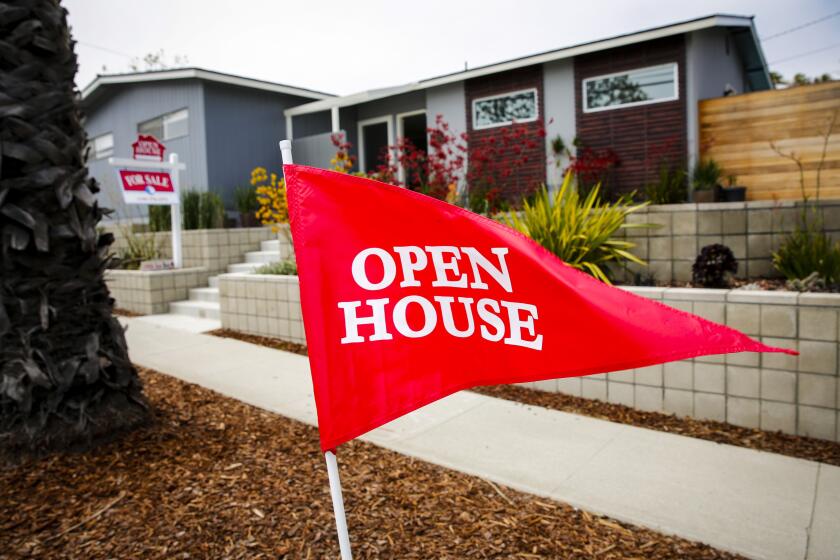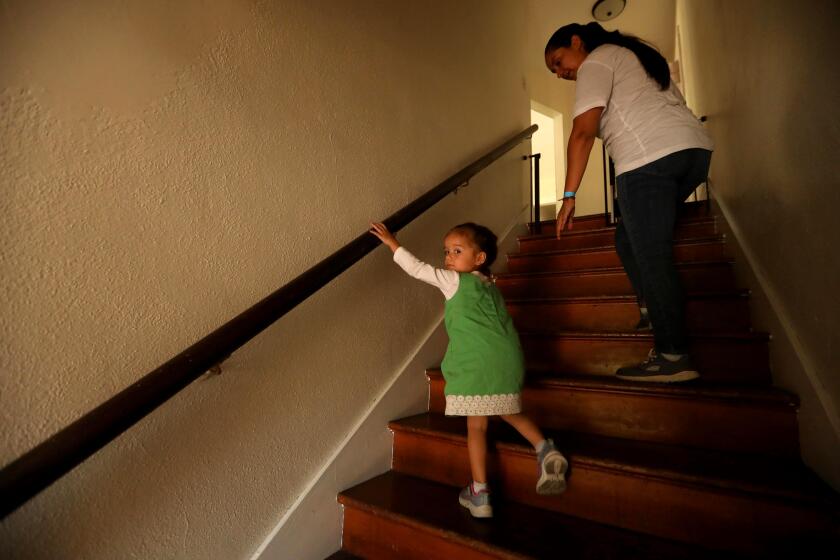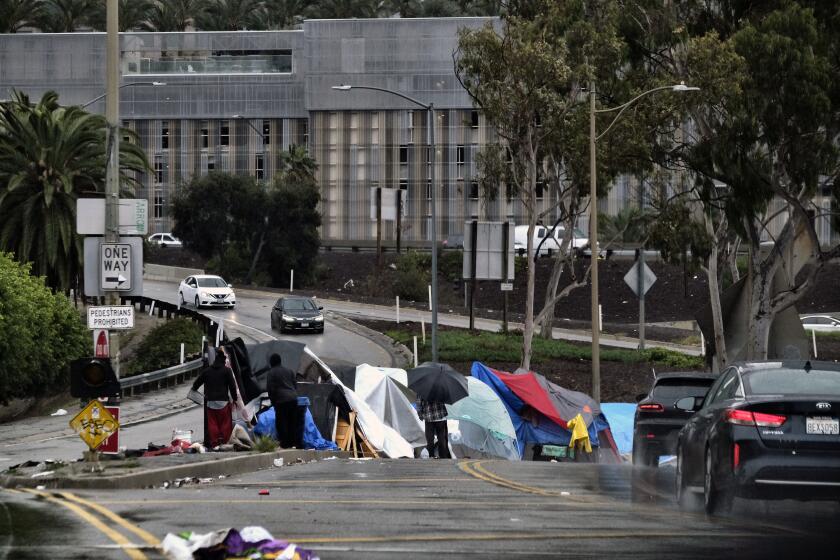New rental developments are changing the American dream of suburban homeownership
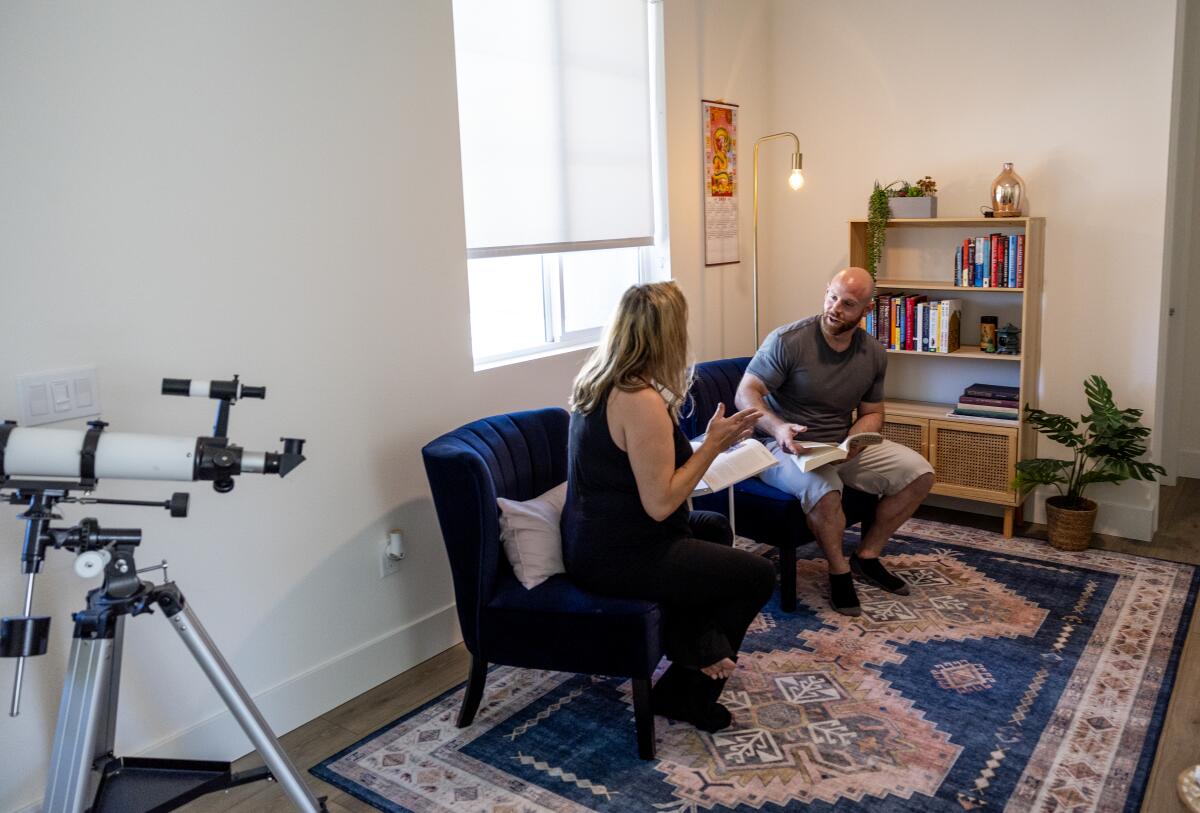
Chelsey and Spencer Marks’ home in Cathedral City was becoming more trouble than it was worth.
The young couple had just spent $15,000 repairing their air conditioning system, essential in the resort town where summer temperatures average more than 100 degrees. Soon, they feared, their three-bedroom house would need new windows and a replacement pump to clean the pool. And even after three years in their home, they had not gotten used to the desert winds howling at all hours outside their doors.
“I was like, I can’t do this anymore,” said Chelsey, 41. “One day I came home and I was like, ‘We’re selling the house.’”

But rather than find another property to buy, the Markses decided to abandon homeownership. They’ve joined the growing numbers of people across the country who’ve chosen to rent a new single-family home in a subdivision designed only for tenants.
In January, the Markses became two of the first residents of SolTerra, a 131-home community in La Quinta, 15 miles from their former property. They sacrificed their home equity and a low mortgage interest rate in exchange for wiping out their credit card debt, pumping up their savings and paying for a trip to Italy this fall.
Plus, now on the rare occasion something in their three-bedroom rental breaks, a maintenance person comes to fix it.
“Come over here and look at this place,” said Chelsea, pointing at her open-concept kitchen filled with stainless steel appliances. “I don’t need to own it to be living that life that I want to live.”
The median price for a single-family house in California surpassed $900,000 for the first time ever, according to the California Assn. of Realtors.
As high home prices persist and mortgages hover at rates twice what they were three years ago, a new twist on the American dream is emerging at unprecedented speed.
Across the country, developers are building new subdivisions with single-family homes only for rent. The projects provide the private backyards and garages that generations of Americans have seen as a marker of middle-class status, but without the ownership that’s traditionally driven middle-class wealth.
Nationwide, roughly 90,000 single-family homes that started construction last year — 10% of the total — are rentals, according to research by the National Assn. of Realtors. That percentage doubled in two years, and it’s the highest share and number of new rental homes since the U.S. Census Bureau began tracking the statistic in the mid-1970s.
Tenants in these new communities, known as build for rent, say they’re overjoyed to have big new houses at costs they can afford, even as many continue to aspire to buy someday. But the increasing share of single-family home rental communities, particularly those developed by large Wall Street firms, is feeding fears among federal and state lawmakers that corporate owners will outcompete potential home buyers and drive prices further out of reach for many Americans.
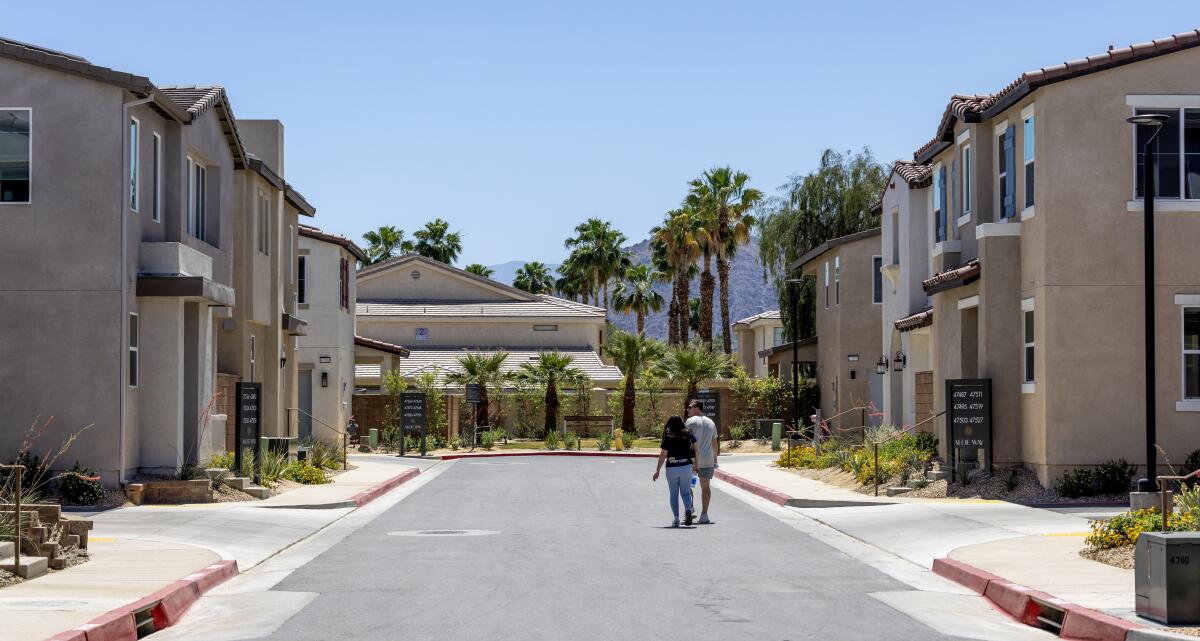
Deonte Palm, a 30-year-old who works as a roofing contractor, said the new four-bedroom home he’s renting in Menifee is a happy landing spot while his family waits out high mortgage rates.
Before moving this spring, Palm was in an apartment with his fiancee and a newborn where, he said, “we were feeling the walls closing in on us.”
Palm linked up with his brother, who had been living separately with his girlfriend and 2-year-old son, to rent the home for $3,400 a month. His housing costs less than before.
“More space and saving money,” Palm said.
Built for rent began in the aftermath of the housing-bubble-driven Great Recession in 2008. Corporate investors started buying up single-family homes in established neighborhoods and renting them out, a trend that’s continued to grow since then.
Demand for more spacious housing increased as the large millennial generation began having children, and investors decided to take their experience with single-family homes up a notch, said Doug Ressler, manager of business intelligence at commercial real estate firm Yardi Matrix. Owners believed that they could better manage their expenses with new homes all in one location and provide a more uniform experience for tenants, he said. Firms began buying entire for-sale subdivisions and converting them to rentals, or building rental developments from scratch.
“There’s still an inadequate supply of housing, the cost of housing has continued to rise, renters are renting longer,” Ressler said. “The large providers are looking at build for rent as a legitimate strategy to be able to fulfill demand for those people that are on a budget and looking to have a larger square footage than an apartment.”
Many bought homes in recent years, aiming to lower payments by refinancing once interest rates dropped. With borrowing costs still high, those plans are on hold.
The build-for-rent boom has been concentrated in Texas, Arizona and other Sun Belt communities where land is cheaper and space is at less of a premium than coastal California. Here, the phenomenon is most prominent in the Inland Empire, long where Southern Californians have ventured for new, relatively affordable homes while remaining on the fringes of Los Angeles and Orange counties.
A few years ago, Bill Shopoff, founder of Irvine-based Shopoff Realty Investments and the owner of the SolTerra project in La Quinta, commissioned a market study. It found that there were about 60,000 renter households within Southern California that desired and would qualify financially to live in three-bedroom homes. But over the last two decades, he said, only a small fraction of the rental stock built in the region had three or more bedrooms, he said.
“That looks like a hole in the market that we should be trying to solve for,” Shopoff said.
Shopoff, who has 45 years of real estate experience across the country, originally planned to develop SolTerra as a for-sale property and then shifted to build for rent.
Not much changed about how the community was going to look, he said, except the decision to put in an on-site leasing office.
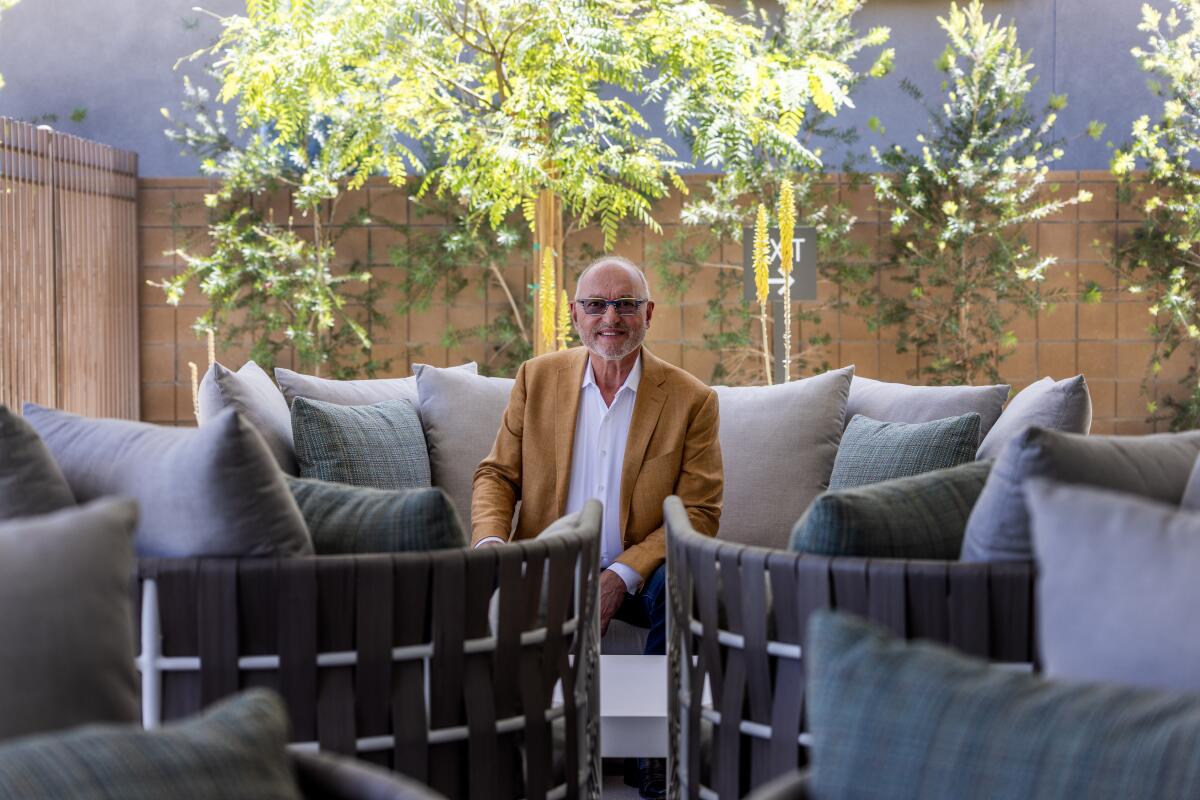
The three- and four-bedroom homes, which are one or two stories with Spanish-style roofs, come with colorful mosaic tiles on the entryways. Every house has a private garage and patio, quartz countertops and soaking tubs in the primary bathroom. SolTerra has a large community pool, clubhouse and multiple small parks.
“I’m not sure that if you didn’t see the rental sign you’d be able to discern the difference,” Shopoff said. “That’s our intention. It lives and feels as if you were a homeowner.”
Rents at SolTerra range from $3,299 a month for a 1,520-square-foot home to $4,460 for models around 2,400 square feet. The development, which opened last summer, is almost 50% leased, a sign, Shopoff said, of strong demand.
Last month, Blackstone, the world’s largest private equity firm, finalized a $3.5-billion acquisition of Tricon Residential, a Toronto-based developer and landlord of apartments and single-family home rentals in the United States and Canada. In a release announcing the deal, Blackstone touted its commitment to Tricon’s $1-billion, 3,000-home build-for-rent pipeline in the U.S.
The Inland Empire is one of Tricon’s primary markets. Since last summer, the firm has opened a 303-home project in Menifee, where Palm now lives, and a 170-home community in nearby Wildomar. Last year, Tricon also broke ground on a development in Winchester, where its 493 homes will be split between for-sale and rental properties.
The largest attraction for build-for-rent tenants is cost, analysts say, as the run-up in home prices and mortgage rates has left affordability at or near record lows.
In California, monthly payments to buy a mid-tier home, including a mortgage, taxes and homeowners insurance, averaged $5,500 in March, an 80% increase since January 2020, according to the Legislative Analyst’s Office. It’s now twice as expensive to purchase a two-bedroom home than rent one, the office found.
Nearly three-quarters of renters and those under 35 have considered moving out of Los Angeles because housing costs are too high, according to a new poll.
The math was simple for Erick Carcelen, who moved into a four-bedroom, three-bathroom home in Tricon’s Menifee development with his wife and three daughters in April.
His family has wanted to own a home for years. But once he calculated the mortgage, utilities and maintenance expenses of a comparable house nearby — even with a reasonable down payment — he figured his monthly costs would be around $6,000.
“I’d rather pay $3,800 and be like, I’m freaking comfortable,” said Carcelen, 47.
Some tenants prioritize reasons other than affordability. Marcia DeMello lived for decades in coastal Orange County, but as the 59-year-old neared retirement, she wanted to explore the desert.
DeMello moved to a three-bedroom home in SolTerra to see whether she could withstand the summer heat. If she continues to enjoy living there, DeMello plans to buy a house rather than remain a renter.
“As I get older, I’m going to be susceptible to whatever the rental industry determines is fair market value,” said DeMello, who works as a massage therapist. “I don’t want to be that vulnerable.”
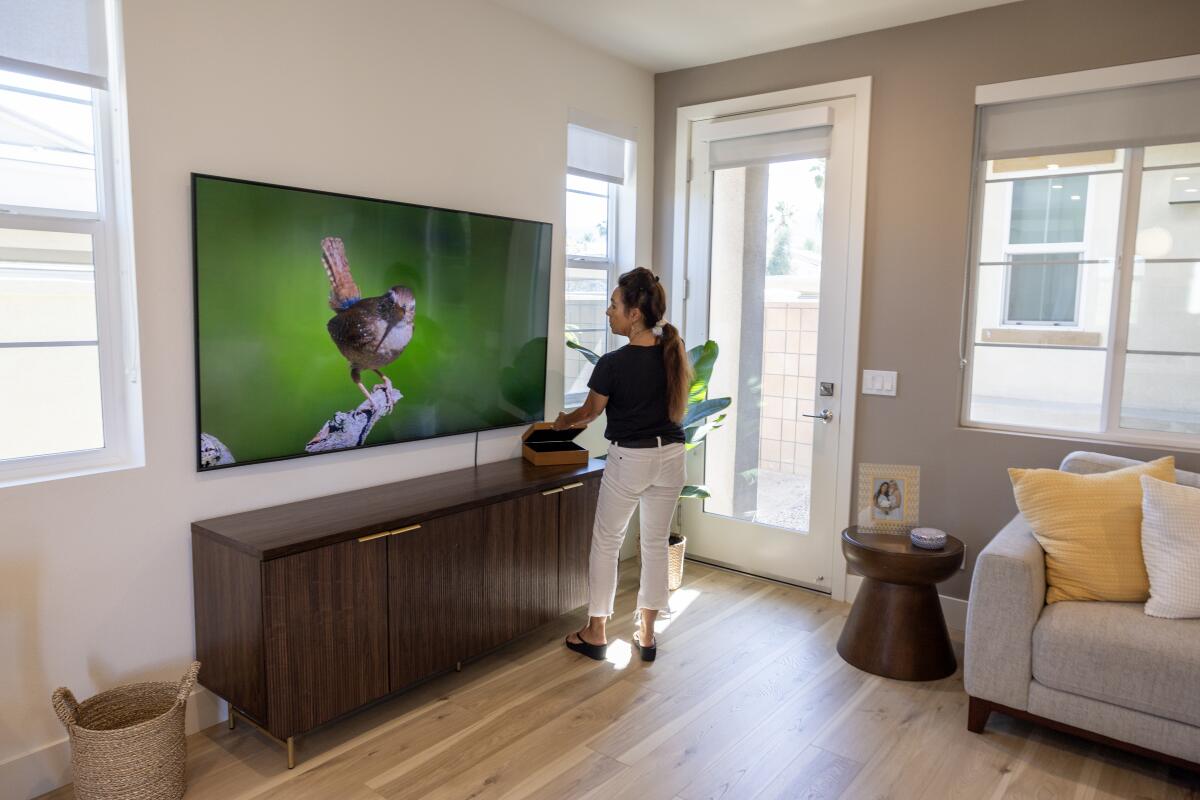
DeMello’s concerns are shared by federal and state lawmakers who have put fears about investment firms’ incursions into the single-family home market into legislation.
Statistics show that about a third of all rentals nationwide are single-family homes. Large institutional investors own slightly more than 3% of that figure, according to a Brookings Institution estimate.
Still, legislators point to bad behavior from big firms: Invitation Homes, one of the nation’s biggest single-family home rental providers, agreed to pay nearly $4 million this year to resolve allegations it violated California’s anti-rent-gouging laws. Opponents say that increasing interest from corporate entities takes homeownership away from individual buyers, including in new subdivisions where homes are purchased at discounts in bulk for the rental market.
Corporate investors “have a significant advantage over a typical California family,” said Assemblymember Christopher M. Ward (D-San Diego), who has pending legislation to curtail build-for-rent projects. “You are allowing a new phenomenon in transactions that is inherently uncompetitive.”
By contrast, owners say they’re increasing the overall supply of housing and providing more opportunities for people to live in single-family homes.
Two Riverside County communities that Tricon is developing had been stalled for more than a decade after prior builders had originally received approval to build for-sale subdivisions. Only when Tricon bought them in recent years to turn the sites into rentals did they move forward.
Shopoff, the SolTerra owner, said build for rent’s success comes from people’s desire to live in the communities.
“It’s interesting that government wants to restrict capital, but capital is only responding to the demand,” he said.
Ressler and other analysts don’t see the underlying dynamics that have accelerated build for rent changing. After World War II, the GI Bill provided returning veterans and their families with huge financial benefits, including low-cost mortgages that worked hand in hand with increasing suburbanization, helping develop homeownership as a foundation for building wealth.
There’s no comparable public investment on the horizon to juice worker pay, especially at a level to overcome the burdens of buying and borrowing, he said.
“The rising costs of housing and mortgages is going to be around really for an extended period of time,” Ressler said.
More to Read
Subscriber Exclusive Alert
If you're an L.A. Times subscriber, you can sign up to get alerts about early or entirely exclusive content.
You may occasionally receive promotional content from the Los Angeles Times.

